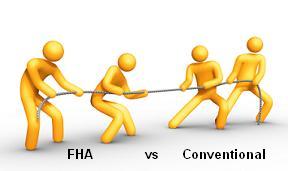
With the current strict lending requirements for conventional loans (10-20% down, higher than average credit score), "going FHA" with a 3.5% down payment is the only way that many people can buy homes right now. What exactly does this mean, though? And if you're looking to buy a house, why what are the pros and cons of an FHA Loan?
What is the History of FHA?
The history of FHA goes back to the 1930s, when the government created the Federal Housing Administration (FHA) with the passing of the National Housing Act of 1934. This act was passed as part of the New Deal efforts during the Great Depression to decrease unemployment and stimulate the economy by increasing private credit from banks and lending institutions. FHA was not created to loan money from the government-- it was created to insure loans from banks, so that banks would more readily loan out money to home buyers.
By insuring mortgages, FHA drastically increased the number of people who could afford down payments and mortgage payments on their homes and made it possible for middle class families to purchase homes of their own. The ceiling for single-family loans has been raised several times since its beginning, the most recent time being in 2008 under President George W. Bush. However, in December 2013, HUD (US Department of Housing and Urban Development) made an unprecedented announcement that they would be lowering debt limits in the highest cost areas, while lower cost area limits would remain the same.
Important things to know about FHA:
- The 3.5% down payment can be made with the buyers own savings, a gift from a family member, or a grant from the state or local govt. down payment program.
- Though it is easier to qualify for an FHA loan than a conventional loan, your credit must still be ~580 or above in order to qualify.
- The loan must be through an FHA-approved lender, but not all FHA-approved lenders will have the same rates and costs: shop around!
- There are two mortgage insurance premiums required on all FHA loans: an upfront mortgage insurance premium (UFMIP) of 1.75%, and an annual mortgage insurance premium (MIP) of 1.55%. Unlike PMI on a convention loan, MIP exists for the length of the FHA loan. However, if you convert to a conventional loan at some point after you buy the home, then you can drop the MIP.
- FHA does not actually make the loan, they insure the loan so that if the homeowner defaults, the bank receives the rest of the money from FHA and does not lose their investment.
Hopefully this has answered some questions on the subject of FHA loans! Have anything to add? Let us know in the comments!

